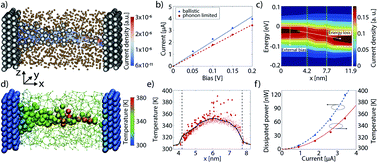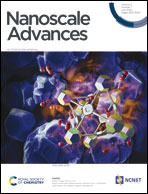Electro-thermal transport in disordered nanostructures: a modeling perspective
Abstract
Following the emergence of novel classes of atomic systems with amorphous active regions, device simulations had to rapidly evolve to devise strategies to account for the influence of disordered phases, defects, and interfaces into its core physical models. We review here how molecular dynamics and quantum transport can be combined to shed light on the performance of, for example, conductive bridging random access memories (CBRAM), a type of non-volatile memory. In particular, we show that electro-thermal effects play a critical role in such devices and therefore present a method based on density functional theory and the non-equilibrium Green’s function formalism to accurately describe them. Three CBRAM configurations are investigated to illustrate the functionality of the proposed modeling approach.

- This article is part of the themed collection: Recent Review Articles


 Please wait while we load your content...
Please wait while we load your content...